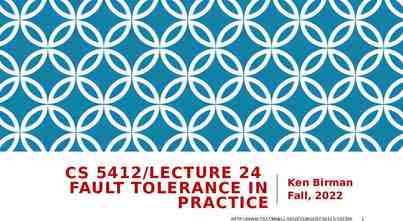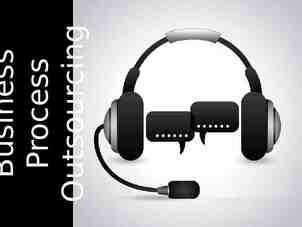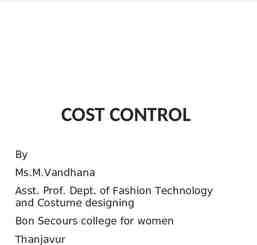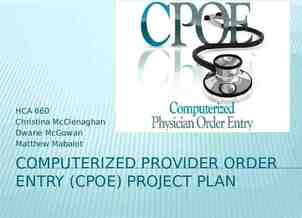Kennedy & Company Baylor University Human Resources: Organization and
12 Slides2.65 MB
Kennedy & Company Baylor University Human Resources: Organization and Operations Review & Design Proposal May 2017 2017 Kennedy & Company Education Strategies LLC
Project Overview Objective The Human Resources department at Baylor University is seeking a partner to assist in assessing and improving its organizational and operational effectiveness. The Human Resources function aims to streamline processes, reduce compliance risk, build trusted relationships across the institution, and establish itself as a key partner in the university’s strategic agenda. Achieving these aims will be a multi-phased process, with the initial focus on data, systems, and related processes. Having implemented organizational structure enhancements and launched several training initiatives and online open enrollment, this is the most pressing area for Baylor HR today. This phase of work will provide insight into much of the HR organization and operation, and as such, this effort will also identify and recommend a path forward for future phases to accomplish the overall ambition for the HR organization – a streamlined, trusted, service-oriented team driving a people strategy that is aligned with the institution’s overall strategy. Project Scope Specifically, Kennedy & Company understands that the scope of this work involves making recommendations for data management and operations that will maximize efficiency, effectiveness, and service levels while concurrently reducing compliance risk. Our assessment will investigate all data management-related aspects of HR operations and adjacent functions that interface with HR operations. HR Operational Elements Process/workflow design Talent Acquisition HR Talent Compensation Organization Roles and responsibilities Talent Mgmt Reporting relationships Employee Relations and Compliance Baylor Human Resources Technology and tools Service levels Process Learning and Dev’t Benefits Technology The outcome of this work will provide the following: Identification of gaps and opportunities in current processes, use of technology, and the training and deployment of human resources, specifically as it relates to data management Recommendations for specific actions that will optimize data management and operations Business requirements definition for a future Human Resources Information System (HRIS) A roadmap for future phases to achieve the overall ambition of the HR organization 2 W Ta Ta wh he
Project Overview Project Scope (continued) We understand that the desired goals of HR leadership are: Goals of This Project Improve operational effectiveness to achieve HR best practice performance in data management: o Streamline operations across the University to reduce paper processes, improve data integrity, and mitigate compliance risk o Identify and address gaps and inefficiencies in current processes and the use of technology o Define common processes and policies to standardize approaches, provide consistent customer service, and limit confusion Define a clear path from today to the desired future state for the HR data management and operations that includes goals, objectives, and recommendations that are results-oriented, achievable, and measurable over time Help to define the technology requirements ahead of the implementation of a new HRIS Future Goals (Out of Scope) Develop a top quality HR service delivery model and plan that: o Clarifies the effort between campus entities and HR to perform functions and deliver the services necessary to manage human resources activity o Clarifies expectations and responsibilities, thus strengthening and optimizing HR service delivery o Emphasizes collaboration with campus partners o Outlines services and assumptions of responsibility between HR and the campus entities o Defines mutual requirements and expectations for critical HR processes and utilizes data analytics to manage continuous improvement HR Organizational Model Framework Positioned for optimal organizational effectiveness Reactive Standardize Just get the job done Make activities consistent Focus Align with business and organization HR Operational Maturity 3 Le red wa of Positioned for optimal strategy execution Align Drive growth based on strategic priorities L r S
Proposed Methodology & Approach Approach to Our Work Kennedy & Company believes that the best projects are those that are done in close collaboration with our client partners. Because we have experience working with many different institutions, we appreciate and value the deep institutional knowledge and insight that our client partners possess, and aim to engage all key stakeholders in the process. Additionally, we have learned that collaboration and transparency throughout the project sets the stage for successful outcomes. Because of this, our proposed work plan incorporates regular communication with the project leader and sponsor. 1 Audit of Current State A B Systems Audit C Review of Process & Policy Documentation Interviews with Key Stakeholders and Business Owners The systems audit, review of process and policy, and interviews with key staff will run concurrently. 2 Data Management Assessment & Gap Analysis This phase will produce a comprehensive data management process and system map and a gap analysis. This includes how roles currently interact with processes and the policies that govern those processes. These deliverables will be discussed with the project leader to inform the development of the strategic recommendations and execution plan. . 3 Strategic Recommendations & Execution Plan The final deliverable will include three elements: (1) A set of recommendations and an execution plan to streamline and enhance data management processes, policies, and related roles and responsibilities; (2) A business requirements document for a future HRIS; (3) A recommended path forward to achieve the HR organization’s ambitions beyond data management. 4
Proposed Methodology & Approach 1 Audit of Current State In the first phase of work, the systems audit, review of process and policy documentation, and key stakeholder interviews are run concurrently and inform each other. We will conduct a comprehensive audit to understand how the current HR systems support HR operations and the employee life cycle. This may also include systems that interact with the HR systems, but are not exclusively managed by HR. Systems Audit During this phase, the Kennedy & Company team will meet HR professionals who utilize the current HRIS systems and IT professionals who manage the technology. We will collect any documentation of the systems and utilize interviews to capture what is not formally documented. For each system, we will capture: Its capabilities and the degree to which they are utilized Its role in the employee life cycle process Its interaction with other systems, as well as non-automated components of the processes, including data flows, data inputs, actions triggered by human activity, maintenance requirements, etc. Any gaps in functionality or service levels Review of Process and Policy Documentation We will partner with leadership and staff to obtain a full inventory of the current processes and policies that relate to data management. Our process mapping activity will involve identifying not only the detailed steps in these processes, but also the people and technology that are involved in each and how effective they are at supporting current operations. As part of this documentation process, our team will work to understand how the processes integrate into any broader processes and policies in place across the University. 5
Proposed Methodology & Approach 1 Audit of Current State Interviews with Key Stakeholders and Functional Units The focus of the interviews will be to augment the written documentation of processes and policies in the prior step with insight from business owners in order to fully capture the processes, policies, roles, responsibilities, and training. We will gather institutional knowledge of how dayto-day operations may differ from official structures, processes, and policies, and why these discrepancies exist. We aim to understand not only what is currently done, but what is desired in terms of process, data flow, and how Baylor HR professionals would optimize their ability to effectively execute all aspects of data management operations. Some examples of interview questions include: What are the processes and policies in place today? How do you use the systems in place today? What seems time consuming, burdensome, or redundant? What are the required roles and responsibilities to execute processes effectively? What training have you received? What specialized requirements apply in terms of privacy, information security, records management, and the like? What tools/data/processes/policies would you like to incorporate in the future to improve your work? The TheCurrent Current Registration RegistrationProcess Process The Thecurrent currentregistration registrationprocess processappears appearstotobebecomplicated complicatedfrom fromthe thestudent studentperspective perspectiveand andcould couldbebe contributing contributingtotostudent studentmelt. melt. Accuplacer Accuplacer Test Test Prep Prep AA pp pp ll i cci aa tt i ooi nn Accuplacer Accuplacer ESL ESL Wait 24 Wait 24 Hours Hours Wait 10 Wait 10 Days Days Collect Test Collect Test Bridge to Academic and Bridge Academic and CareertoServices Career Services Retest? Retest? PACE? Eng. PACE? Eng. Writing Writing Sample Sample AELP AELP Collect Test Collect Test Do Online Orientation Do Online & Orientation (Academic New) (Academic & New) Do Online Orientation Do Online Orientation (Academic - ESL & New) (Academic - ESL & New) Advising Advising Academic Academic Plan Plan Remove Remove Hold Hold Advising Advising Academic Academic Plan Plan Remove Remove Hold Hold CE ESL Advising CE ESL Advising Student Student Completes Completes Advising Advising Questionnaire Questionnaire AP English AP English 3, 4, 5 3, 4, 5 SAT / ACT / SAT/ /IELTS ACT / TOEFL TOEFL / IELTS Do Online Orientation Do Online & Orientation (Academic New) (Academic & New) RR ee gg i si tts rr aa tt i ooi nn Transfer Credit Transfer Credit ENGL 101/Math ENGL 101/Math 17 17 2015 Kennedy & Company Education Strategies LLC 2015 Kennedy & Company Education Strategies LLC High-level Overview of Kennedy & Company Approach to Process Mapping Map people, flow, timing 6 Identify cycle, consistency, and lead time challenges Identify bottlenecks with significant downstream implications Identify highly manual and/or paper-based processes Quantify Impact & Value
Proposed Methodology & Approach 2 Data Management Assessment and Gap Analysis Gaps § Limited proactive outreach to underrepresented populations in the pipeline § High turnover on the team has led to limited historical knowledge and steep learning curves § Limited use of Talisma – this is beginning to shift, but many interactions – email and otherwise – have not been tracked in the system Opportunities § Restart the high touch activities for underrepresented populations – in particular with AIPs § Work with Marketing to co-create value propositions for both programs that set realistic expectations for students – where this is not possible, discuss programmatic changes § Enhance rigor around capturing indicators of admissibility and yield to improve decision making in committee and enable tailored messaging and outreach to increase yield 3 Kennedy & Company will use the data, documentation, and insights gained in the current state audit to build comprehensive HR data management system and process maps and to identify gaps and opportunities within processes, policies, and roles. This will involve an assessment of not just of the systems, processes, and policies themselves but, more critically, the degree to which they are used and enforced consistently or inconsistently throughout the University. The gaps and opportunities identified in this step will be discussed in detail with project leadership as well as potential approaches to address them. Strategic Recommendations & Execution Plan The insights gained through the current state audit, assessment, and gap analysis will culminate in a set of recommendations for immediate-, mid-, and long-term changes to policy, process, roles, training, and technology use for HR data management at Baylor. A technology requirements document will be developed using the findings of the current state and process, policy, and roles evaluation. This will help HR design and implement a future HRIS that supports an optimized HR operation. What systems should be integrated and what API’s may be required to have seamless data movement Functionality required to support HR roles throughout the HR operations Reporting capabilities to effectively measure performance What paper processes should be automated and what manual processes may need to be augmented User access and permissions to mitigate compliance risk Finally, a recommended approach to assess and develop plans to achieve Baylor’s broader ambition for Human Resources will be provided. 7
Proposed Methodology & Approach Key Deliverables: For this project, Kennedy & Company will produce several deliverables, culminating in a set of recommendations and corresponding planning documents: Project Kick-Off Process & System Maps and Gap Analysis Data Management Recommendations & Execution Plan Business Requirements for HRIS Roadmap for Future Phases 8 Initial presentation to confirm project goals and introduce the scope and timeline of the project to key stakeholders. Alignment on interviewees and systems for audit phase. Process map and system map of current data management operations. Identification of gaps between current state and optimized HR data management. Recommendations for process, policy, responsibility, and technology changes. Assessment of the urgency and complexity of addressing recommendations based on the most pressing needs of the University. An immediate-, mid-, and long-term execution plan to implement recommendations. Recommendations on what business needs must be considered when designing and implementing a new HRIS. A plan to assess and enhance Baylor’s HR organization, operations, and service levels beyond data management.
Anticipated Timeline & Pricing Proprietary & Confidential Timeline The proposed project would take approximately 8-10 weeks; its length would vary based on the ready availability of organizational and operational data and access to Baylor leadership and staff for interviews. Project deliverable presentation Stage Weeks Week Number 1 2 3 4 5 6 7 Project Kick-Off Audit of Current State Data Management Assessment and Gap Analysis Strategic Recommendations & Action Plan Fees and Expenses Kennedy & Company utilizes fixed fee pricing. Kennedy & Company proposes a fixed-fee price of 45,000 for its services. This quote is exclusive of project-related expenses, which Kennedy & Company will cap at 20% of fees. This quote for services expires on June 21, 2017. A full billing and payment schedule, based upon Baylor processes and policies, will be included in the project contract. 9 8-10
Potential Future Phase Approach
Potential Future Work The scope of the project outlined in this document will provide a solid foundation for ongoing enhancement of the Baylor HR organization and operations. Future work to achieve the broader ambition of the HR organization may include the following elements: Service Option Description Development of Service Level Agreements and an operational dashboard / metrics to monitor performance and install accountability HR Service Delivery Model Development Development of new organization charts, position description development / modification, organizational reconfigurations, position alignment Targeted effort to gather and understand the HR needs of stakeholders and their current impressions of the HR organization A high-level roadmap to determine the feasibility and requirements for implementing the model Detailed set of recommendations across process, policy, organizational structure, and technology that would incorporate prior findings related to data management Comprehensive Diagnostics Development of current state and / or future state process maps Recommendations for immediate-, mid-, and long-term actions needed to address gaps, including process, system, and human resource changes Development of an HR strategic plan that would define how the function would be positioned to help the University to meet its strategic priorities Development of HR Strategic Plan and Visioning Set specific and measureable goals that complement the strategic priorities Define the methods in which the HR strategy will be implemented and operationalized 11
Kennedy & Company

















